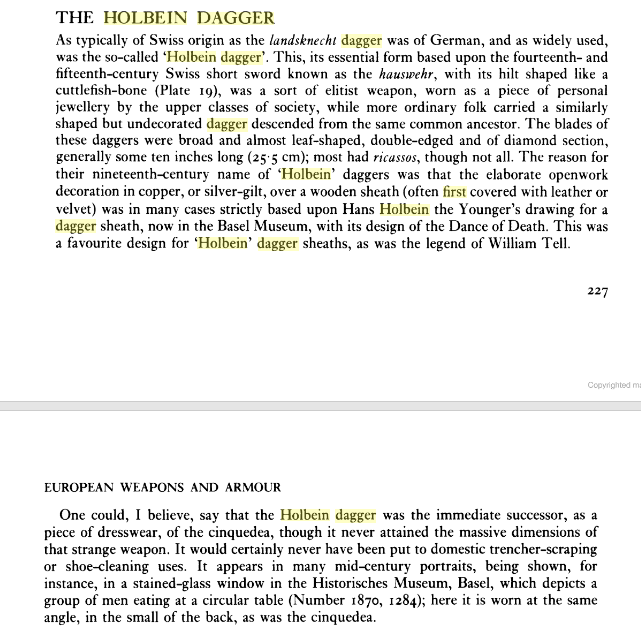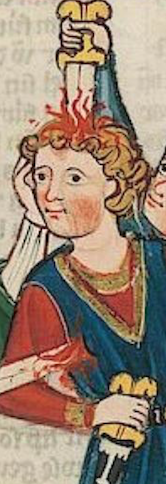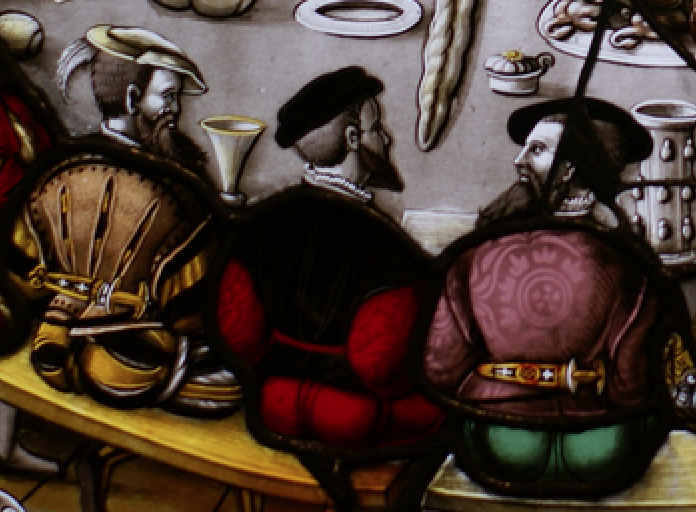As I began to research I was continually drawn to Holbein daggers - but most surviving museum examples are from the 15th-16th century, with a few from the mid-late 14th century - much too late for my kit interpretation. However, I've read in several places that the origins of the dagger go back as early as the 13th century. I kept reading this same phrase "...as early as the 13th century..." but no sources seemed to dictate where they first obtained this idea. After hours of digging, I've come up with something that might be a reference to earlier dates, but I'm still very unsure. In his work, European Weapons and Armor From the Renaissance to the Industrial Revolution, Oakeshott mentions the Holbein or "swiss dagger" and notes that in the Renaissance era he sees it as the immediate successor to the cinquedea. He also notes that the Holbein designs of the Renaissance and the familiar Hauswehr sword both descended from an earlier "common ancestor." Is he also referring to 13th century date? If so, why not say it? To further complicate the matter, he then gives a reference for the stained glass panel - "(1870, 1284)"...what I cannot determine is if this some sort of cataloging system, or a reference to the year 1284. I've gone to the museum website and they do not appear to have the stained glass catalogued for online search. In the window, men are seated at a banquet table and are obviously wearing Holbein's - one more ornate than the other. Their fashion also seems to clearly dictate a Renaissance origin for the stained glass - joined hose, hats, doublets, etc. thus making it unlikely that the depiction is indeed from 1284.
If this is the case, can anyone shed some light on the origins of the Holbein, and if there are any extant examples from the 13th century that have eluded me? Being a variant of the baselard (itself most likely Swiss in origin - "Basel"), I find it keenly plausible that the dagger was in existence as early as the 13th century, but I can't find any "proof" (strong word, I know) or "close-to-proof". I've attached images that show a baselard in use in Northern Italy in 1260 (bordering Switzerland mind you), the stained glass in question, a manuscript scene from Switzerland dated as early as 1300 with a dagger hilt suspiciously similar to the Holbein, the myArmoury description of Holbeins ("...as early as the 13th century..."), and Oakeshott's description as well. What say ye scholars?




